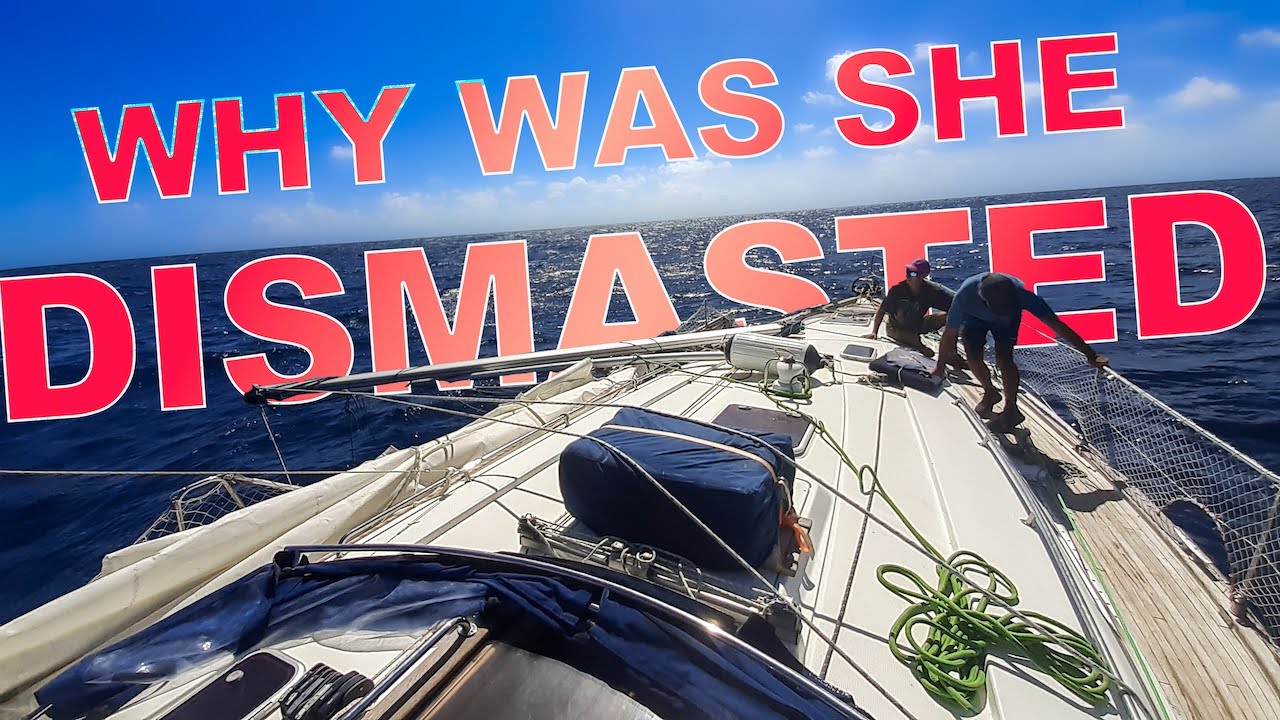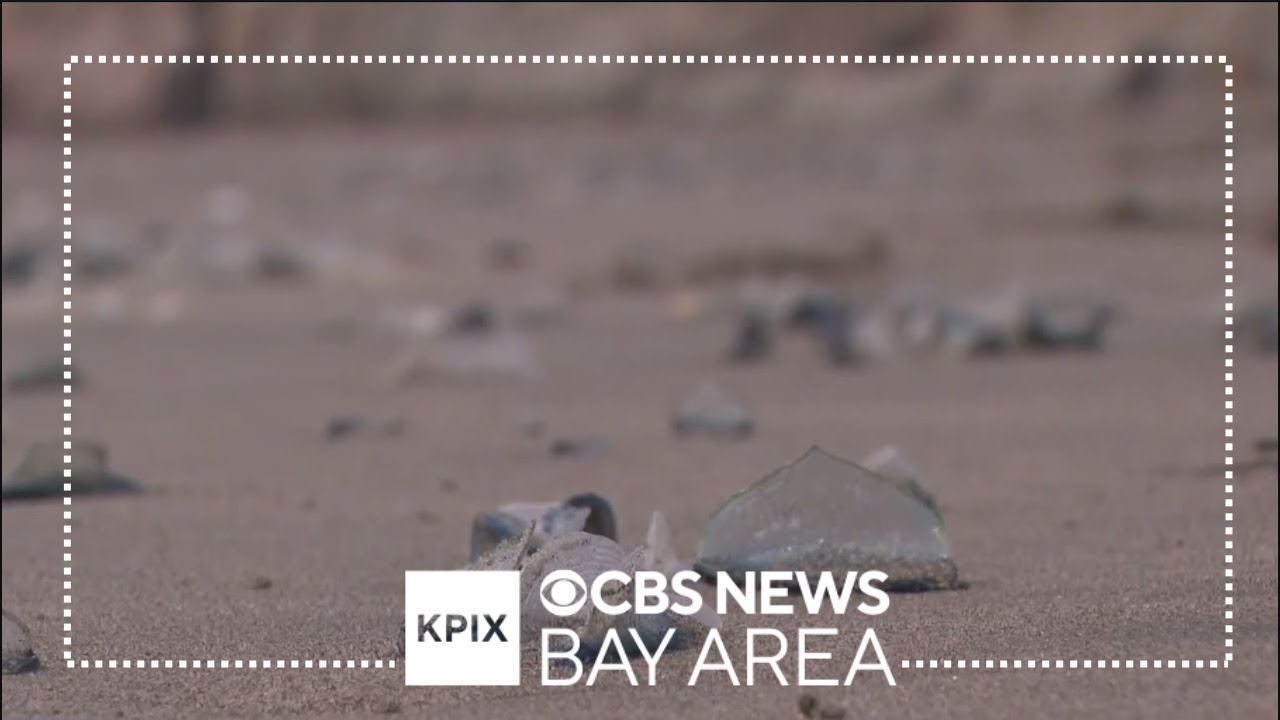După ce am salvat trei suflete de pe un Bavaria 44, am știut că ceva nu era în regulă când am pus ochii pentru prima oară pe acea navă demontată la toate acele mile în larg. Nu avea nicio treabă să fiu acolo (după umila mea părere), dar am vrut alte câteva surse să stabilească exact DE CE. În cele din urmă le-am primit sub forma unei observări întâmplătoare în Ensanada și a unui rigger pe nume Chris Catterton. Chris a fost omul care a remontat „Te Vega” Mason 65 pe care l-am luat peste Pacific acum câțiva ani. Poți găsi acea serie de videoclipuri aici: https://www.youtube.com/watch?v=_Io0L22FDq4 Când mi s-a cerut să ajut cu instalarea acestei bărci, l-am sunat pe Chris să văd dacă ne poate ajuta. A ajuns să facă cea mai mare parte a tachelajului, iar noi l-am instalat în Ensanada. Înainte de a scăpa, m-am așezat cu el și am avut o conversație despre Yara, părțile slabe ale instalației, și am primit părerile lui despre câteva lucruri. Acesta este videoclipul YouTube care a ieșit din el. Lista de redare de salvare: https://www.youtube.com/playlist?list=PLYK_-XEJdbbQDENK7u_1c-4kJRt6O4WeJ Dacă doriți să vedeți întregul interviu, l-am postat integral în postările anterioare. Acest bit vă va oferi toate părțile pertinente. ❤️ Sprijină acest canal: vino la navigație cu noi! https://sailingzingaro.com/ Patreon: https://www.patreon.com/svzingaro Tricouri: https://www.bonfire.com/store/zingaro/ 👇 Social Media: Website: https://sailingzingaro .com/ Facebook: https://www.facebook.com/svzingaro Instagram: https://www.instagram.com/sailing_zingaro/ 👨👩👦👦 Companii pe care le iubim: OC Tenders: https://octenders. co.nz/ Seawater Pro Watermakers: https://seawaterpro.com/ Garnitură de etanșare fără picurare Lasdrop: https://lasdrop.com/ Dispozitiv de tăiere a arborelui Spurs: https://spursmarine.com/shaft-cutters/ Sonar orientat spre înainte: https://echopilot.com/ 🎶: Epidemic Sound
source
Acest SINGUR LUCRU i-ar fi putut salva (Pt. 4/4)





Great advice from both you and Chris. I know most of us coastal cruisers don’t really give this enough attention. I’m sure one day it’ll bite us in the ass. Thank you very much for your time and effort.
Thank you for this important information! It makes clear (once more) that the standing rigging is most important for safety, and that damage because of corrosion has to be checked continuously…
My friend died when there Bavaria crashed in Portugal…Not Bavarias fault but they lost control och the keel feel of
WOW, that was awesome information! I've rigged a few boats before and didn't know any of that information or hardly any of it. This is an eye opener. Question: Would you use Dyneema on your rig rather than wire? I'm about ready to start building my Mumby Cyber 48 aluminum catamaran. I'm considering Dyneema rigging. Should I do that or not?
Plain petroleum jelly would do the same thing or you can buy something like Super Lube from Harbor Freight which is a cheap $5 dollar a tube silicone dielectric grease also that is food grade but I think that there is more to these failures than just from old fittings failing from corrosion also.
Calling Bavaria is not the righting source.
The old Bavaria use Selden rigs. So call them. They will tell you to inspect the rigging on time. Replace the parts on time. Meaning you need a guru for that as the insurance is getting more on the edge of excepting do it your self fixes.
Teflon is no good with water. So I don’t see the use of teffgell or something similar ligit.
Seldom says. Do not use any grease or silicone. If sealant is used to make the fitting water tight to the deck make sure it does not compromise the stainless steel.
I owned a Bavaria 44 and it sailed around the world for 10 years. Obviously we stopped using it as a ocean cruiser.
It had done its job and became a weekend / holiday cruiser. It’s not wise to push the limits to see if the boat can make it. Your life is not an experiment.
What is retarded is that coastal cruising and off shore don't me diddly squat you can have rough seas close to the shore just like you can out in the middle of the ocean. So stop with that non sense Bavaria shouldn't have down graded these critical fittings on their cheaper boat unless they instruct their new owners of a limitation in operating conditions which the salesmen would likely never mention and the company wouldn't want to highlight that either it is basic sketchy boat building practices that have been going on for ever unfortunately I don't even blame the engineers that much because they are required to work within constraints and the budget so they have to skimp on something somewhere or build a boat that is so expensive which they are all already that their boat wont sell so the entire marine industry is who can skimp the most without having accidents and failures which gain them a bad reputation like Bayliners and Hunters have gotten for example. That being said the sailors and how they drive their boats make a huge difference also just like if you are the type of driver to not let off the gas until you are at the stop light you will wear out brakes a damn site faster than someone who drives more conservative Crossing a river bar or rough inlet that is all in shore and those are likely the highest loads that will be put on the rig in average use that will happen many more times that you will suffer a knock down in a gale on an ocean crossing.
Lost my rig offshore due to crevice corrosion. Chain plate rated to 80 tonnes failed! Not much fun, but we were lucky and no one was injured. As soon as often is the case, it was at night with the spinnaker up.
Very interestingly talk James👍🏆
Just shows the risks you are taking when you crew on a boat you don't know and don't pass if the owner can't/won't be straight about rig mainentance etc.
James tef gel looks like an Australian product. Just watched a video on how much to use on threaded holes and nut and bolt applications. Thank you James for this video, I've never heard of this product before
What about anti corrosion waxes used in Automotive applications but also offshore industries as well.
Part of the problem is boat builders who have to keep a big fat eye on the price for the charter market etc. They are the system integrators who decided what to fit . I've often seen component suppliers blamed for the failure of parts that are actually under dimensioned/marginally specced , that's down to the marine architect/builder. Yes you could theoretically expect a component supplier to walk away if they aren't happy about the way their parts are being used, but the world ain't like that .
All stress marks
Do a x- ray
A lot of this stainless is comming from China cheaper grade
A prerequisite for new owners of boats – one must know what to look for and how to maintain safe rigging. James, you have any skin left for a new tat of your baby's name & face? Best, :¬) Webhead USA
Youtube "creators" arent trustworthy. Seems a bit too coincidental.
Awesome episode. Well done and very very important to heed.
I had both of my toggles fail on my cutter. Luckily the inner forestay toggle failed while I was only two days off of Hawaii, so we pulled into Oahu and repaired the toggle. The Genoa furler forestay failed in the middle of the pacific. Because it was a cutter the mast stayed up. It was not good.
Hey 👋 guys. We just wanted to say happy new year and thank you for all your great films and the really good advice. We are looking for a Vagabond 47, a very different boat but she has a lot of sail so upgrading the rigging is something that we will be looking at. Happy new year guys and fair winds.❤️❤️💙😘😘😘🙏
I guess even in the great lakes we would want to look at our rigging
What I never understood, why at 5.51, is your chain plate attachment point so much thiner than the toggle opening? It would seem you'd want those to be really close to avoid point loading on the clevis pin.
Check your rigging, people. Zingaro has a BRAND NEW RIG! Want to come sailing with us? https://sailingzingaro.com/
the pictures you shown looks more like fatigue than crevice corrosion… it is common to have rigging under tensioned and lead to premature failure
A sailboat means maintenance. Ben Franklin is quoted saying "an ounce of prevention is worth a pound of cure" . The cost of preventing catastrophic damage is nothing to a major failure. It is good to learn from others mistakes than to learn from your own mistakes.
Who does this guy work for?? He is a complete apologist for Selden! How many Bavaria 44 rigs failed? 1 is too many.
James. You’re a badass. Really appreciate your education and care of others. Thank you for all your videos.
Good advice from zingaro one of the best sailings channel in you tube gracias amigo this is Martin from New Zealand 😊
You got th right guy there w Chris. Wealth of knowledge without the attitude. Wields a mean axe too!! Awesome series putting it out here for both review and education. Loving what I learn after 50 years of sailing watching your channel…
Interesting video but after listening to the end I did not hear the actual size and diameter of the broken toggle and its stud that you said was smaller and the size of the one you said was larger. What were the numbers? Was only the toggle strap smaller or was the whole assembly of strap and stud and turnbuckle body smaller? I see you have Hayn fittings. Any idea who manufactured the broken fitting and approximately how many years ago? Also, maybe tefgel would help but is there a chance the problem is that the toggle strap was a poor grade of stainless and the toggle stud was a higher grade, meaning there was an element of dissimilar metal galvanic corrosion going on?
Best information ever on You Tube Sailing!!!
I see some are switching to titanium fittings on their boats refit, so is titanium better or worse for long term corrosion and fatigue life?, anyone know?
Thanks for excellent serious sailing information!
Wow, what a thought-provoking video! It's amazing how this one simple practice could have made such a difference. I appreciate the insight and analysis you provided, James. Your collaboration with Chris from C C Rigging really paid off, as his expertise and willingness to educate others truly shines through. It's great to see the sailing community coming together to share knowledge and experiences. Keep up the fantastic work, and thank you for your time and effort in bringing us these valuable lessons! ⛵️👍😊
nicely done, very logical and informative.
A keel stepped mast gives more peace of mind. Deck masts, one fail in any part of the rigging and it’s all over.
I have been a jet aircraft mechanic for many years, I would suggest you search for a galvanic corrosion charts for dissimilar metals and if all of the metals used for the entire assembly are EXACTLY the same levels of all the metallic parts down to molecular level there will be low corrosion. If any of the parts are slightly different there will be galvanic corrosion. I have used Teflon isolators as bushings to stop the corrosion. You can get very tough Teflon stock to make them from it would also be a visual indicator for wear and an easy replacement even under way.
Don't get me started on GLASSED-IN chain plates. Whoever thought that was a good design idea needs to be fed to the hogs.
Crevice & stress corrosion … anyone doing blue water likely needs to change their rigging every 10 years, as mentioned.
Edit. Just cause it looks "beefy" doesn't mean it's not near the end of its life. The Bav 44 Ocean you pointed out had significant surface rust, which may be of concern.
The fact is, like blades within an airplane's jet engine, all these parts are life limited and should be changed out periodically. Given they are a critical "safety of sail" component, people are nuts to wait until near failure.
Since we aren't using ultrasonic methods to inspect the metal, nor know the number of cyclical loads, a change-out periodically (e.g. 10 yrs) is our only saving grace.
Great videos, learning a lot from you and soaking up everything I can 👍
At 0:35 seconds in this video you show failed piece; there is no corrosion on the piece. It failed where the radius begins; completely fracturing on one side and there are cracks on the other side as well (very small cracks). The fracture at the top where the pin was; failed because it bent quickly and simply 'tore' it off. No corrosion there. In aviation high stressed metals need to be radiused properly on ALL edges to remove 'stress risers' that will turn into cracks; precipitating the failure. The failed rig; to me; simply looks to thin; no corrosion (pitting)